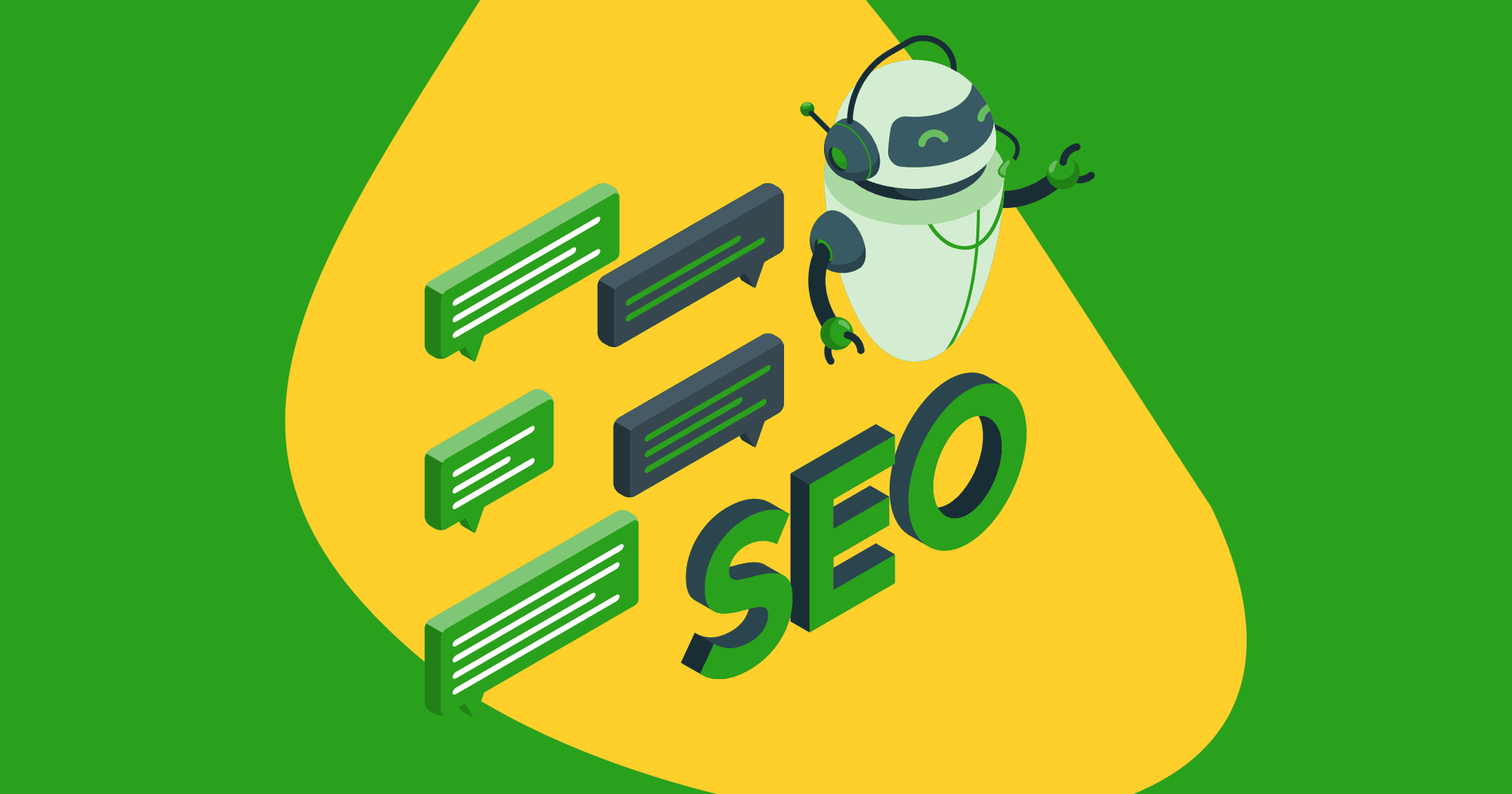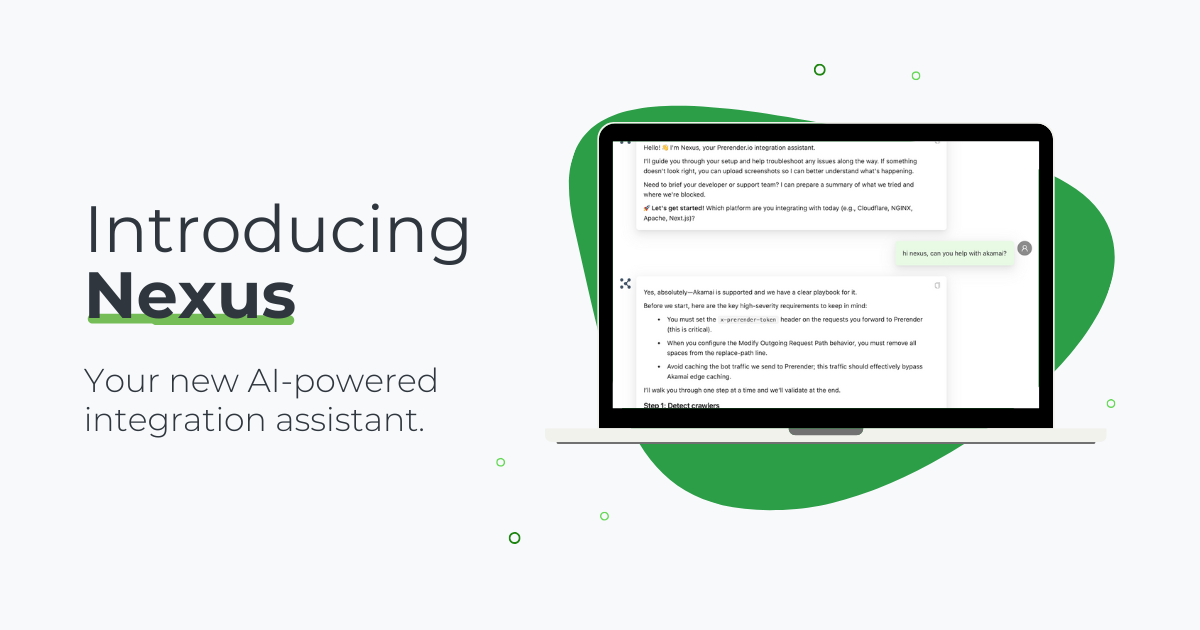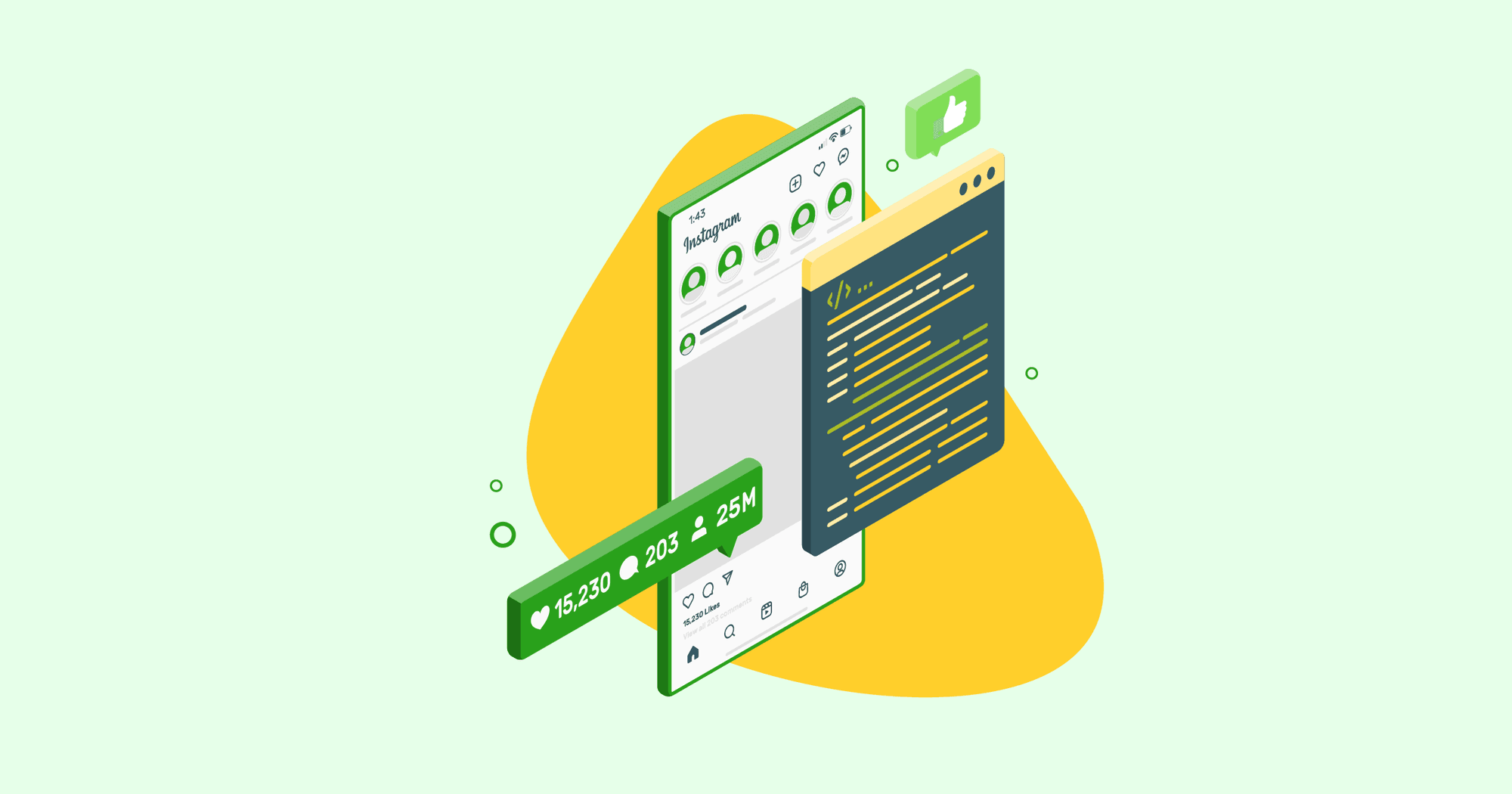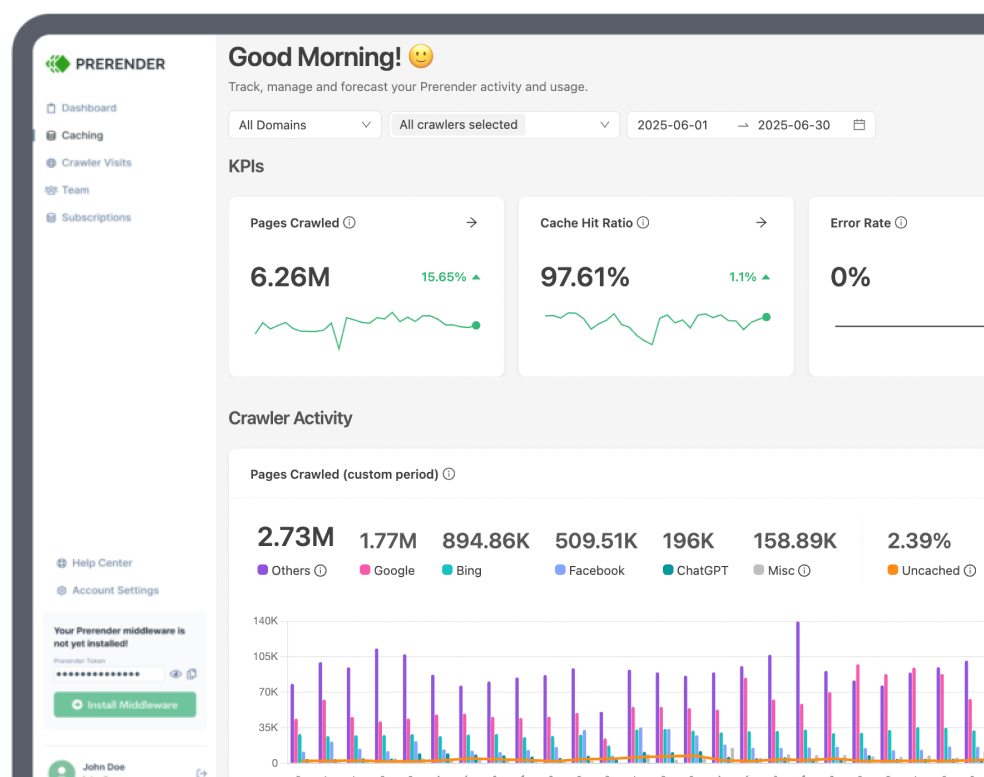While we’ve long understood that Core Web Vitals (CWVs) influence search rankings, these same metrics now determine, indirectly, whether your content even makes it into large language models (LLMs).
You could have the most accurate, well-optimized content on the web, but if your site fails on performance metrics such as LCP, CLS, or INP, you lose ground in search rankings and also reduce your chances of being included in AI answers.
In this article, we’ll explore how poor site performance can degrade your LLM visibility, why core web vitals optimization is now central to AI search, and how performance tuning has become critical for sustaining visibility.
How Do LLMs Retrieve and Render Web Content?
To see why site performance is important for LLM visibility, we need to look under the hood at the retrieval process. When an LLM answers a user prompt with fresh web data, it typically follows these steps:
- Query generation: the LLM turns the prompt into a structured query.
- Source identification: it identifies potential sources from a search index (Google, Bing) or direct crawlers like GPTBot.
- Content retrieval: the crawler requests web pages that match the query.
- Parsing and extraction: the system extracts visible text, metadata, and sometimes structured data (schema, JSON-LD).
- Relevance scoring: it evaluates trust, authority, and clarity to decide whether your content deserves inclusion.
- Integration: extracted snippets are then passed into the model’s context to generate a response.

Source
Unlike traditional search engines with a sophisticated JS rendering pipeline, most AI crawlers don’t execute scripts or wait for a page to fully render. They typically grab the initial HTML response and extract whatever text is immediately available.
That means if your content is hidden behind client-side rendering, endless redirects, or heavy scripts, crawlers may never capture it. And with LLMs processing billions of queries in real time, they’re even less likely than search engines to make allowances for slow or incomplete pages.
To them, if it’s not in the initial HTML, it doesn’t exist. This real-time demand is where CWVs become a make-or-break factor.
See other hidden content that can hurt your online visibility on generative search platforms.
Why Core Web Vitals Are an Important AI Discoverability Signal
When Google introduced Core Web Vitals in 2020, the purpose was clear: improve user experience by rewarding fast and stable websites. LCP (Largest Contentful Paint), CLS (Cumulative Layout Shift), and INP (Interaction to Next Paint, which replaced First Input Delay) became the benchmarks for page performance.

Poor scores meant higher bounce rates and lower search rankings. But, beyond traditional search, CWVs now serve as signals of technical accessibility for LLMs. It’s important to note that, while AI crawlers don’t measure these metrics directly, they’re affected by them in practice.
- LCP: delayed paint means key content isn’t visible when crawlers fetch. Missed paint means missed extraction.
- CLS: unstable DOM shifts lead to incomplete or scrambled text being captured.
- INP: laggy interactivity signals poor user experience, which feeds into trust/quality scores indirectly.
So, a page that loads quickly and renders content immediately signals that it’s well-maintained and reliable. By improving your site’s core web vitals, you create a positive feedback loop: better page experience signals lead to more successful content extractions, higher confidence scores, and increased visibility opportunities in AI responses.
The Impact of Poor CWVs on LLM Visibility
Poor page or site performance creates a cascading series of technical problems that significantly reduce your share of AI citations. They include:
1. Crawlability Constraints
Search engines and AI scrapers operate under strict resource budgets, and when your site performs poorly, those limits are consumed faster, leading to crawlability issues.
- Slow load times (LCP issues) delay how quickly crawlers can fetch and render your pages, reducing how many URLs they can retrieve in each crawl session.
- Unstable loading (CLS issues) disrupts content extraction when DOM elements shift during crawling. This causes crawlers to extract incomplete content, meaning what LLMs “see” about your site could be inaccurate.
2. Rendering Failures on JavaScript-Heavy Sites
Things get even more complicated on sites that rely on client-side JS rendering. Many ecommerce and SaaS platforms only deliver their core content after large JS bundles are executed.
- Heavy JS bundles delay content availability, so crawlers and AI parsers may encounter empty shells before hydration.
- Multi-cycle rendering compounds the problem when key content only appears after multiple JS execution phases. Due to this, crawlers may never record it, resulting in missing product data or empty templates in AI training datasets.
That means every extra second of rendering delay increases the risk that your page is not indexed completely. Incomplete content receives lower quality scores, which influence not just immediate citation decisions, but also long-term source reputation within the AI system.
Resource: How to Debug and Prevent Rendering Failures
3. Lower Priority for AI Inclusion
Traditional SEO rankings remain a prerequisite for AI inclusion because most AI systems rely on top-ranking results to decide what to cite. However, poor site performance can directly affect those rankings.
Google Page Experience system already folds CWVs into its algorithm. Consistently weak LCP, CLS, or INP scores push sites down the SERPs. This is where the cascading effect begins: drop a few positions, and suddenly you’re outside the pool of results AI systems pull from.
4. Missed Opportunities in Zero-Click AI Experiences
In scenarios where multiple sources contain similar information, performance metrics often serve as the tiebreaker.
If your content and a competitor’s content are equally relevant and authoritative, but their page loads faster and renders more reliably, their content will be preferentially cited. Over time, this competitive disadvantage accumulates, reducing your overall share of AI citations.
Resource: Adapt your Ecommerce Store to the New AI Shopping Experience
5. Indirect Brand Reputation Erosion
Finally, poor page load performance affects how both users and algorithms perceive your site over time.
According to research by Akamai, a 1-second delay in page load can reduce conversions by 7%. Users who land on a slow page tend to bounce quickly. These behavioral signals feed back into ranking systems, reinforcing the idea that your site is low quality.
Since LLMs indirectly learn from these patterns, your site will be deprioritized in retrieval systems. Once that trust erosion sets in, the recovery takes much longer, even after performance improvements.
Why Website Performance Tuning Is Now a Critical AI Visibility Strategy
Site speed and performance have always mattered for SEO, and as AI systems become more sophisticated and widely used, these elements now carry a whole new weight for AI discoverability.
This is simply because AI retrieval pipelines are optimized for efficiency at scale and will discard anything that slows them down. Without optimized CWVs, you risk being excluded from these systems that now shape how users consume information.
To prevent that, performance tuning has to be continuous. It’s not enough to optimize once and assume you’re safe. Utilize tools like Screaming Frog, Google Search Console (GSC), and PageSpeed Insights to proactively monitor your website for potential issues before they affect crawlability and visibility.
Over time, this diligence will pay off beyond basic inclusion. Faster load times, reliable rendering performance, and guaranteed content availability give you a measurable edge in how AI systems perceive and prioritize your site.
Safeguarding LLM Visibility Through Performance Optimization
How do you, then, safeguard your visibility, especially when your site relies on JavaScript?
Since AEO builds on SEO foundations, the same technical optimizations that boost search performance also strengthen your visibility in AI systems. Developers often turn to specific performance strategies, such as:
- Code optimization and lightweight frameworks: trimming JS bundles, compressing images, and adopting modern frameworks help reduce payloads. These frameworks aren’t the solution on their own, but enable patterns like efficient bundling and image optimization that directly improve LCP.
- Server-side rendering (SSR): with SSR, key content is delivered directly in the HTML response rather than waiting for client-side hydration. This approach reduces rendering failures for both search crawlers and AI scrapers.
- Static site generation (SSG): prebuilt HTML pages eliminate runtime rendering delays, making content instantly accessible and crawler-friendly.
- Edge caching/CDNs: delivering content closer to the user (and crawler) cuts latency, improving INP and overall responsiveness.
Each of these approaches reduces the friction that frustrates crawlers or causes them to miss critical content. But they’re not quick fixes. Implementing SSR, SSG, or a new framework often requires dedicated developer resources, careful monitoring, and sometimes major architectural changes that may be expensive to maintain long-term.
Thankfully, Prerender.io offers a more direct and scalable solution. As one of the leading LLM optimization tools, it strengthens your SEO Core Web Vitals, making it easier for AI crawlers to access, process, and surface your pages.
Here’s how it works: after installing Prerender.io’s middleware, you can submit your sitemap through the dashboard. The tool will crawl your pages, render them server-side, and cache them as stable snapshots.
This snapshot includes everything—your scripts, structured data, and dynamic elements—so AI crawlers and search bots see the same stable content your users do.
Then, when a bot requests your page, Prerender.io delivers the snapshot in an average of 0.03 seconds, pushing your CWVs and server response scores to near-perfect. See for yourself how Haarshop got a page speed score of 99 and a 50% traffic increase after adopting Prerender.io. Read the case study here.

Resource: 7 Best Tools for LLM Optimization and AI Discoverability
Prerender.io: Your Ticket to AI Visibility Through Optimal Website Performance
Ultimately, a strong Core Web Vitals profile is necessary for visibility in every AI search platform. Improve your site performance not just for rankings, but for eligibility in the environments where LLMs decide which sources to retrieve and cite.
And if your site is JS-heavy, the best first step is installing Prerender.io. It works seamlessly with most tech stacks to ensure that your content is always visible to both AI crawlers and search bots, without delays or rendering errors.
Start with Prerender.io for free and enjoy better crawling, faster indexing, more LLM traffic, and greater revenue potential.
Want to learn more about improving site performance? Check out these guides:



